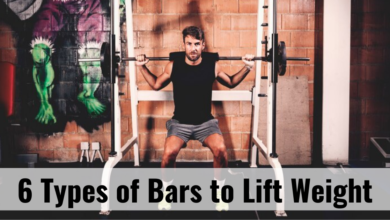How To Break Hymen Through Exercise?

Discussing how to intentionally break the hymen through exercise requires sensitivity and understanding. It’s important to note that the hymen can naturally stretch or tear due to various activities, including exercise. Engaging in exercises such as running, cycling, or gymnastics can potentially cause the hymen to break. However, it is crucial to emphasize that the presence or absence of an intact hymen does not determine a person’s virginity or sexual activity.
Approaching the concept of “breaking” the hymen should be done with care, as it perpetuates harmful societal norms. It’s essential to prioritize comprehensive sexual education, consent, and open dialogue to dispel myths and promote a healthy understanding of sexual health.

Understanding the Hymen
The hymen is a thin membrane located at the entrance of the vagina in females. It is a topic that has garnered considerable cultural and social attention, often associated with misconceptions and myths. Contrary to popular belief, the hymen is not a reliable indicator of virginity or sexual activity. It is a stretchy tissue that naturally varies in shape, size, and thickness among individuals.
Scientists do not fully understand the primary function of the hymen, but they believe it serves as a partial barrier during infancy to protect the vaginal opening. As girls grow older, the hymen gradually changes and becomes more flexible. Various activities, such as physical exercise, tampon use, or even normal daily movements, can stretch or tear it.
However, it is important to note that the focus should not be on intentionally trying to break the hymen through exercise, as it can naturally adapt and change over time. Some females may have a hymen that is more elastic and may not experience tearing or bleeding during sexual intercourse.
Understanding the hymen is crucial to dispel myths and misconceptions surrounding female virginity and sexual health. It is important to approach the topic with accurate information, respect, and sensitivity to promote a comprehensive understanding of female anatomy and sexuality.
Debunking Myths about the Hymen
The hymen is a small, thin membrane located at the opening of the vagina. There are many misconceptions and myths surrounding the hymen, leading to misunderstandings and misinformation. It’s essential to debunk these myths to promote accurate knowledge and dispel harmful beliefs.
Firstly, the hymen is not a reliable indicator of virginity. It can vary in shape, size, and flexibility among individuals. It may be present in some people and absent in others due to various reasons such as physical activities, tampon use, or even genetic factors.
Secondly, the hymen does not “break” or “pop” during sexual intercourse. It is a stretchy membrane that can gradually stretch or tear over time with physical activity, including sexual intercourse. Pain or bleeding during first-time intercourse is not solely due to the hymen but can be caused by factors such as anxiety, lack of lubrication, or inadequate arousal.
Lastly, it is important to emphasize that the presence or absence of a hymen has no correlation with a person’s morality, character, or worth. It is a natural part of the female anatomy that serves no specific physiological purpose. It is also crucial to note that discussing “how to break the hymen through exercise” is unnecessary, as the hymen can naturally stretch or tear over time through various activities or even during regular physical movement.
The Myth of Hymen Breakage through Exercise
The myth of hymen breakage through exercise is a misconception that has persisted for centuries and continues to cause confusion and misinformation. The hymen is a thin membrane that partially covers the opening of the vagina and can vary in shape and size among individuals. Contrary to popular belief, engaging in physical activities such as sports or exercise cannot rupture or break the hymen.
The hymen is a flexible tissue that stretches and can naturally have an opening large enough to allow menstrual blood to pass through. It can also be stretched or torn due to various non-sexual activities, such as riding a bicycle, using tampons, or even vigorous physical activities. However, the presence or absence of an intact hymen is not an accurate indicator of virginity or sexual activity.
It is important to dispel this myth to promote accurate sexual health education and challenge harmful societal expectations. Understanding the true nature of the hymen can help debunk stereotypes and foster a more informed and inclusive perspective on female sexuality and reproductive health.
Promoting Vaginal Health through Exercise
Promoting vaginal health through exercise is an essential aspect of overall well-being for women. Regular exercise offers numerous benefits for vaginal health, such as improved blood circulation, increased lubrication, and strengthened pelvic floor muscles. However, it is important to note that exercise does not involve or promote the break of the hymen.
Engaging in cardiovascular exercises like brisk walking, jogging, or cycling enhances blood flow to the pelvic region, promoting healthy tissue and organ function. This increased blood circulation also aids in maintaining vaginal lubrication, reducing dryness and discomfort.
Specific exercises targeting the pelvic floor muscles, such as Kegels, can significantly contribute to vaginal health. These exercises strengthen the muscles that support the uterus, bladder, and rectum, reducing the risk of prolapse and incontinence. Strong pelvic floor muscles also enhance sexual satisfaction and orgasmic response.
However, it’s crucial to maintain proper hygiene practices when exercising. Wearing breathable, moisture-wicking fabrics and changing out of damp workout clothes promptly can help prevent bacterial or fungal infections.

Exercise and the Hymen
Promoting vaginal health through exercise is an essential aspect of overall well-being for women. Regular exercise offers numerous benefits for vaginal health, such as improved blood circulation, increased lubrication, and strengthened pelvic floor muscles. However, it is important to note that exercise does not break the hymen. The hymen may naturally stretch or tear over time, often unrelated to physical activity.
Engaging in physical activities such as running, jumping, or participating in sports does not cause the hymen to break or disappear. The hymen can naturally stretch or tear over time due to various factors unrelated to exercise, including tampon use, medical examinations, or even regular daily activities
It is essential to debunk the myth that exercise can somehow “prove” or “disprove” a person’s virginity.
Virginity is a social construct and has no physical manifestation tied to the presence or absence of the hymen. It is crucial to promote accurate information and debunk harmful myths surrounding the hymen and its relation to exercise or sexual activity.
Maintaining Hymenal Health
Maintaining hymenal health is an important aspect of overall gynecological well-being for individuals with an intact hymen. The hymen is a thin membrane that partially covers the opening of the vagina and can be influenced by various factors. To promote hymenal health, it is crucial to adopt a few practices.
Firstly, practicing good hygiene is essential. Cleaning the genital area gently with mild soap and water, and avoiding harsh chemicals or douching, can help maintain a healthy hymen. Additionally, wearing breathable cotton underwear and avoiding tight-fitting clothing can reduce irritation and promote good blood flow to the area.
Secondly, engaging in safe and consensual sexual activities can help prevent hymenal tears or injuries. Using adequate lubrication and ensuring gradual penetration can reduce the risk of hymenal damage.
Lastly, regular visits to a gynecologist for check-ups and discussions about sexual health are crucial. A healthcare provider can provide guidance, address concerns, and offer appropriate advice for hymenal health.
Overall, maintaining hymenal health involves practicing good hygiene, engaging in safe sexual activities, and seeking professional guidance. It is important to prioritize personal comfort, consent, and overall well-being in any decisions related to hymenal health.
Communicating with Healthcare Professionals
Effective communication with healthcare professionals is crucial for receiving quality care and ensuring positive health outcomes. When interacting with healthcare professionals, it is important to clearly articulate your symptoms, concerns, and medical history. Be concise and specific, providing relevant details that can aid in diagnosis and treatment decisions.
Active listening is equally important. Pay attention to what the healthcare professional is saying, ask questions for clarification, and seek additional information when needed. This will help you understand your condition, treatment options, and any necessary lifestyle changes.
Respectful and polite communication fosters a positive patient-provider relationship. Treat healthcare professionals with courtesy, acknowledge their expertise, and address any disagreements or concerns in a calm and constructive manner.
Conclusion
It is important to note that the hymen is a thin membrane that naturally varies in shape and flexibility among individuals. Breaking the hymen is not a goal to be pursued or achieved through exercise or any other means.
Engaging in regular physical activities and exercises can promote overall health and well-being, but it is important to note that they should never be approached with the intention of learning how to break the hymen through exercise. Instead, it is essential to prioritize personal health, consent, and understanding of one’s own body, rather than focusing on societal myths or misconceptions surrounding the hymen.

FAQs
How can I break my hymen smoothly?
It’s important to note that breaking the hymen is not necessary or indicative of virginity. If you have concerns, consult a healthcare professional.
Does jumping break hymen?
Jumping alone does not break the hymen; it can be torn due to various activities or even non-physical causes.
Can walking break your hymen?
Yes, walking cannot break your hymen. The hymen can be stretched or torn through various activities, including sexual intercourse.
Can squats break hymen?
No, squats cannot break the hymen. The hymen can be stretched or torn through various activities, including physical exercise.




Hi my loved one I wish to say that this post is amazing nice written and include approximately all vital infos Id like to peer more posts like this
Ꮤonderful blog! Do yоu have any һints for aspiring ᴡriteгs?
I’m hoping to start my own website so᧐n but I’m a little lost on everything.
Would you advise starting with a free platform like WordPress or go for a paid option? There
are so many choices out there that I’m totally confused ..
Any tips? Bless you!
Email me And I will share some personal tips with you
Email: muhammadaleeh@gmail.com
It seems like you have a great deal of knowledge about this—almost like you wrote the book on it. Aside from that, I think you might add a few graphics to assist illustrate the concept a bit better. Still, this is a fantastic post that is well worth reading, and I will surely be back.